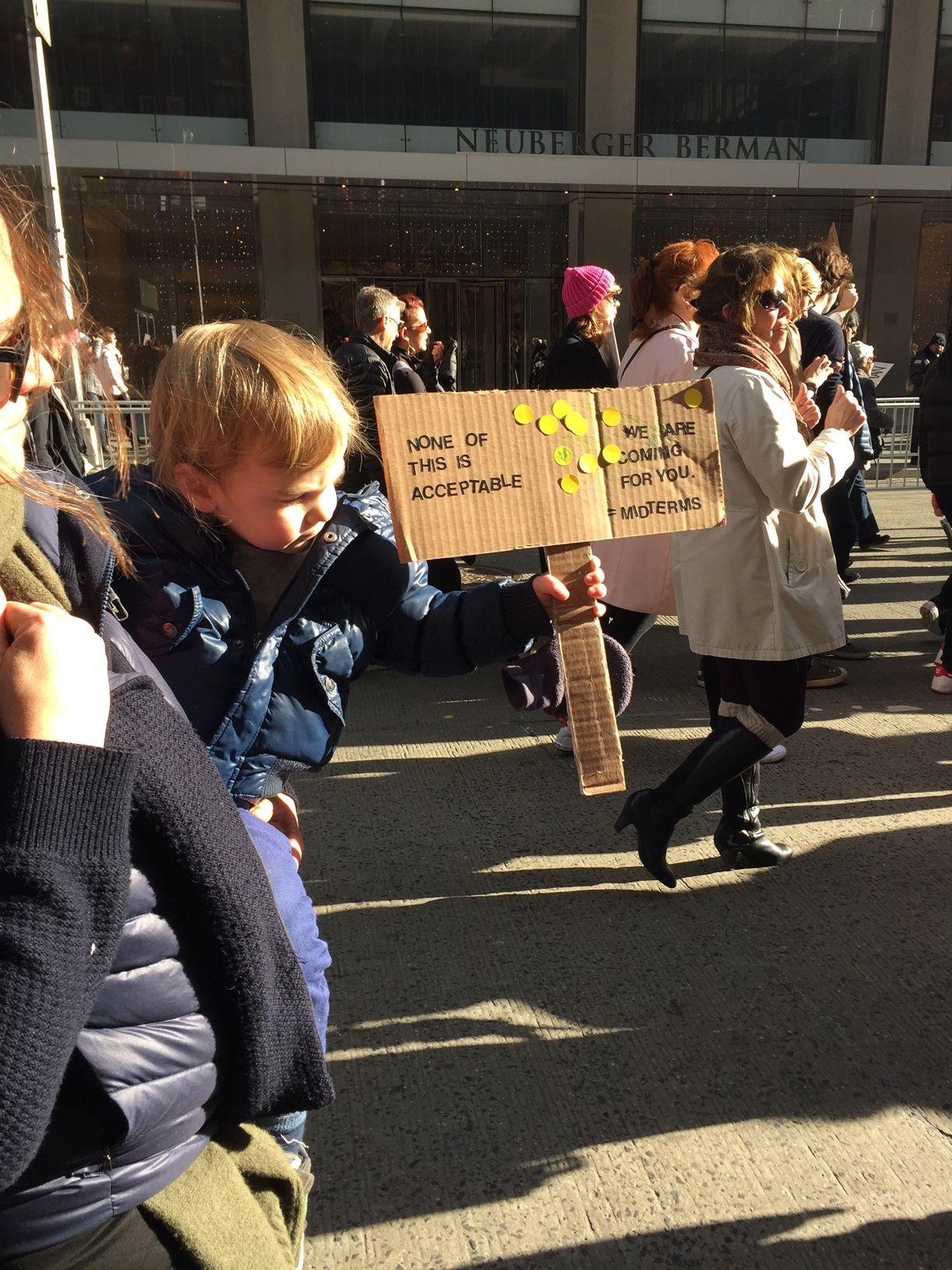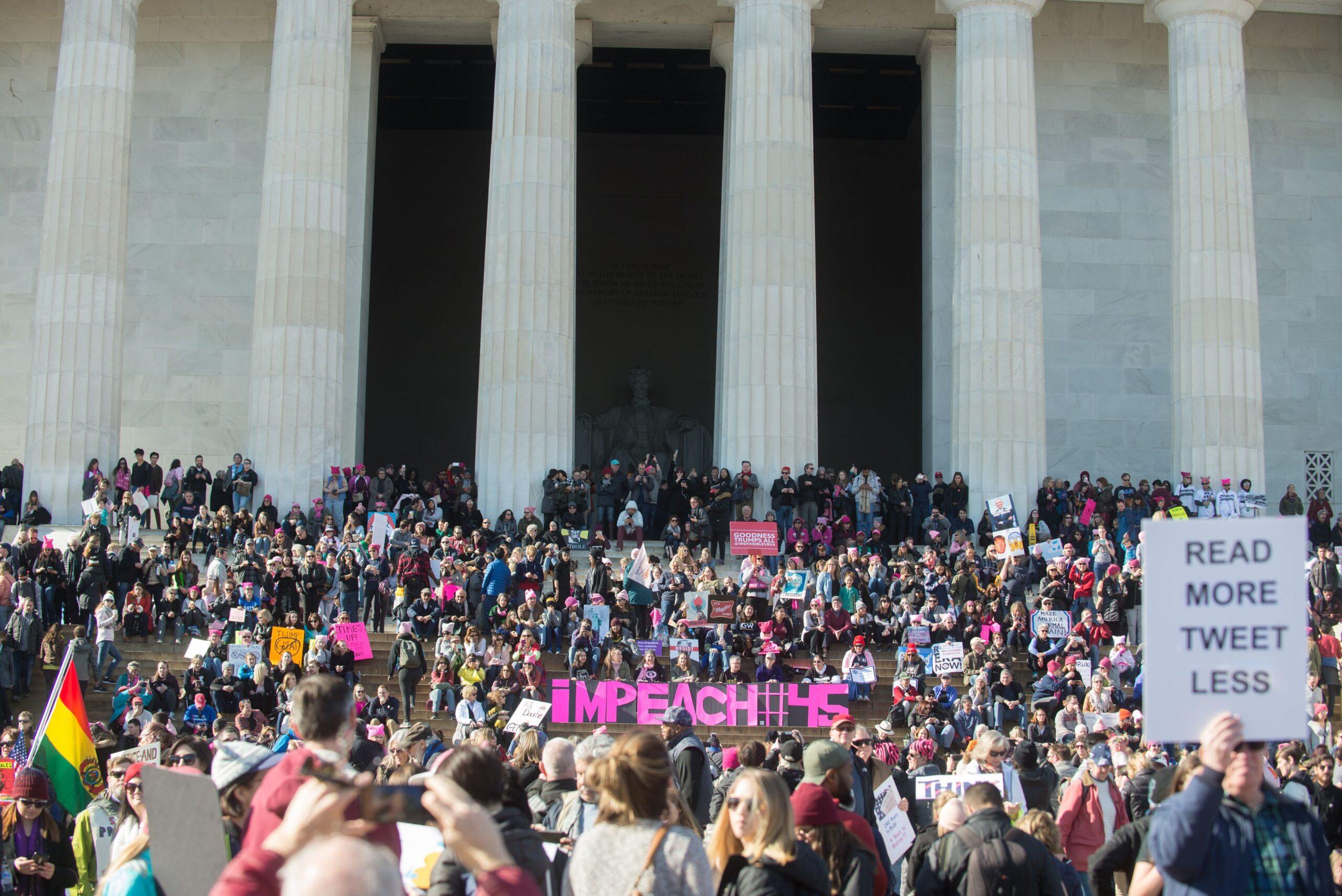The media dubbed 1992 “the Year of the Woman.” That November, a record number of female candidates were elected to the House and Senate—47 and four, respectively—many of whom were motivated to run after the consciousness-jarring experience of watching the Anita Hill hearings on TV the year before. Patty Murray recalled watching the all-male committee questioning Hill and wondering, in horror, “Who’s saying what I would say if I was there?” Not long after, she decided to run for Senate herself, and was elected the junior senator from Washington the following year.
Emerging after the 1992 election, the “Year of the Woman” moniker was both well-meaning and insulting: 1993 was, after all, a few weeks away, and roughly 120 million Americans would continue the daily reality of being female long after the calendar turned. “Calling 1992 the Year of the Woman makes it sound like the Year of the Caribou or the Year of Asparagus,” Senator Barbara Mikulski said. “We’re not a fad, a fancy, or a year.”
This weekend, hundreds of thousands of American women across the country took to the streets and asserted that sentiment once again. It was the one-year anniversary of two of the most surreal days in recent American history: Donald Trump’s inauguration and, a day later, the first Women’s March, the latter of which remains the largest single-day protest in American history. The 2018 Women’s March in New York City was neither as widely publicized nor as meticulously organized as last year’s, and yet people still came out in droves, moved by a sense of internal responsibility—to me and many of the others I spoke to, doing anything but marching again that day just would have felt wrong. (Some cities, like Philadelphia and Chicago, have reported that even more people marched this year than last.) A year ago, skeptics assumed the Women’s March would be a one-time occurrence, and that its energy could not, realistically, be sustainable or channeled into a focused agenda. Saturday proved otherwise.
It was an unseasonably mild January day in New York City. Street merchants hawked pink pussy hats, buttons that featured Trump’s face on the turd emoji, and T-shirts bearing the day’s official slogan: “POWER TO THE POLLS.” Several people seemed to have dusted off last year’s signs, although the few I saw griping about Hillary Clinton’s popular-vote victory (or referencing Clinton at all) felt like relics from another century. The resistance has moved on to things we can actually change. Other signs riffed on the time that had passed and the resilience of the movement: “PUSSY [still] GRABS BACK,” “ANOTHER YEAR, ANOTHER ANTI-FASCISM SIGN.”
“Did he do the stickers?” I asked the mom marching next to me. On her hip was a boy who couldn’t be older than 1, and in his fist was a cardboard sign, spotted with about a dozen circular color-coded office labels, all of which were yellow, except one, which had been scribbled with a green crayon. “NONE OF THIS IS ACCEPTABLE,” it read. “WE ARE COMING FOR YOU. MIDTERMS.”
“He did the stickers, yes,” the woman told me. “But I did the slogan.”

In the days leading up to the march, I found myself consumed with online arguments about the Aziz Ansari controversy, the questionable journalistic tactics of Babe.net, and whether there is an irreconcilable generation gap within the #MeToo movement. From my perch, it seemed as though #MeToo was in danger of splintering. A few days ago, I wondered: “Would the Babe.net controversy cast a dark cloud over the Women’s March?” It did not. Social media has been a valuable tool in organizing these marches and other demonstrations; the flip side is that it can blow small internal controversies out of proportion. Protests serve many functions, not the least of which is getting people to go outside and stand in a space with bad cellphone reception, thus forcing them to actually talk to the other humans.
Something about the atmosphere of this year’s gathering felt profoundly different. There was an anxiety of the unknown in 2017: We’d just sworn in a new president, and nobody knew yet which of his garish campaign promises he’d keep, or which of the many institutions he’d threatened were most urgently in need of protection. All we knew was that he’d used the phrase “American carnage” in his inauguration speech, and that couldn’t be good. Driving down to Washington, D.C., last year in a car full of friends, we listened to the inauguration ceremony on the radio. When the local station started cutting out, one friend joked, “I guess he just cut the funding to NPR.” Nervous laughter rippled through the car—it didn’t seem out of the realm of possibility.

The people around me this year—even the 12-year-old girls—were now wizened activists. Trump has certainly caused some irreparable damage—to the warming planet, to the lives of immigrants, to America’s reputation in the world. But this weekend I was buoyed by the sense that the women around me had, in the past year, gotten more done than the president had, and that we were only just getting started. We’d toppled countless predatory men who’d once seemed unimpeachably powerful. We’d shifted the perception of victims of sexual abuse, because so many of us had been strong and vulnerable enough to publicly share some of the worst things that had ever happened to us. And, as plenty of early reports have reminded us in the past few weeks, we are gearing up to run for office in numbers that will make the so-called “Year of the Woman” look like a blip.
At last year’s march, the masses struck me as Concerned Citizens, many of whom were overwhelmed and discouraged by the sheer amount of things that needed fixing. This year, the crowd felt full of something more empowered, focused, and weaponized: voters.
I went with the same friends this year, because it felt like a new tradition, or a freshly invented holiday: Women’s New Year. A moment to pause, reflect on the past year, and set goals for the next 12 months. The signs around me provided some worthwhile resolutions: “TOPPLE THE PATRIARCHY.” “TRUST WOMEN.” “MAKE AMERICA AMERICA AGAIN.”
Two news stories broke while we marched. The first was that Trump had tweeted about the demonstrations: “Beautiful weather all over our great country, a perfect day for all Women to March. Get out there now to celebrate the historic milestones and unprecedented economic success and wealth creation that has taken place over the last 12 months. Lowest female unemployment in 18 years!” As my friend read this tweet aloud, we had just passed a person in an inflatable T. rex costume wearing a sign that read, “Trump Gives Tiny Hands a Bad Name,” and I was just then staring at a poster that read, “PRESIDENT DICKTATOR,” complete with a drawing of Trump in which his nose was shaped like a (small) penis. Needless to say, we were not marching to celebrate the lowest female unemployment in 18 years.
The other bit of news was that Representative Patrick Meehan, a Republican from Pennsylvania who has been involved with sexual harassment reform on Capitol Hill, had been removed from the House Ethics Committee for using taxpayer money to settle a sexual misconduct claim against him. A year ago, this information would have struck people as calamitous, or maybe the information wouldn’t have reached them at all. Now it feels oddly normal, and indicative of a larger pattern. Something like it will probably happen again tomorrow. Women will continue to make their voices heard, and the reverberations will make more dominoes tremble and fall.
Yesterday’s march was a testament to the ongoing, long-haul nature of effective activism. And since it served as a strong, sturdy bridge between the fervor of last year and this coming one, maybe it will prevent the media from reheating the old “Year of the Woman” moniker once election season gets underway. We are neither caribou nor asparagus. Anyone who underestimates our movement as a “fad,” a “fancy,” or anything less than a major shift in American culture does so at the peril of his own irrelevance.